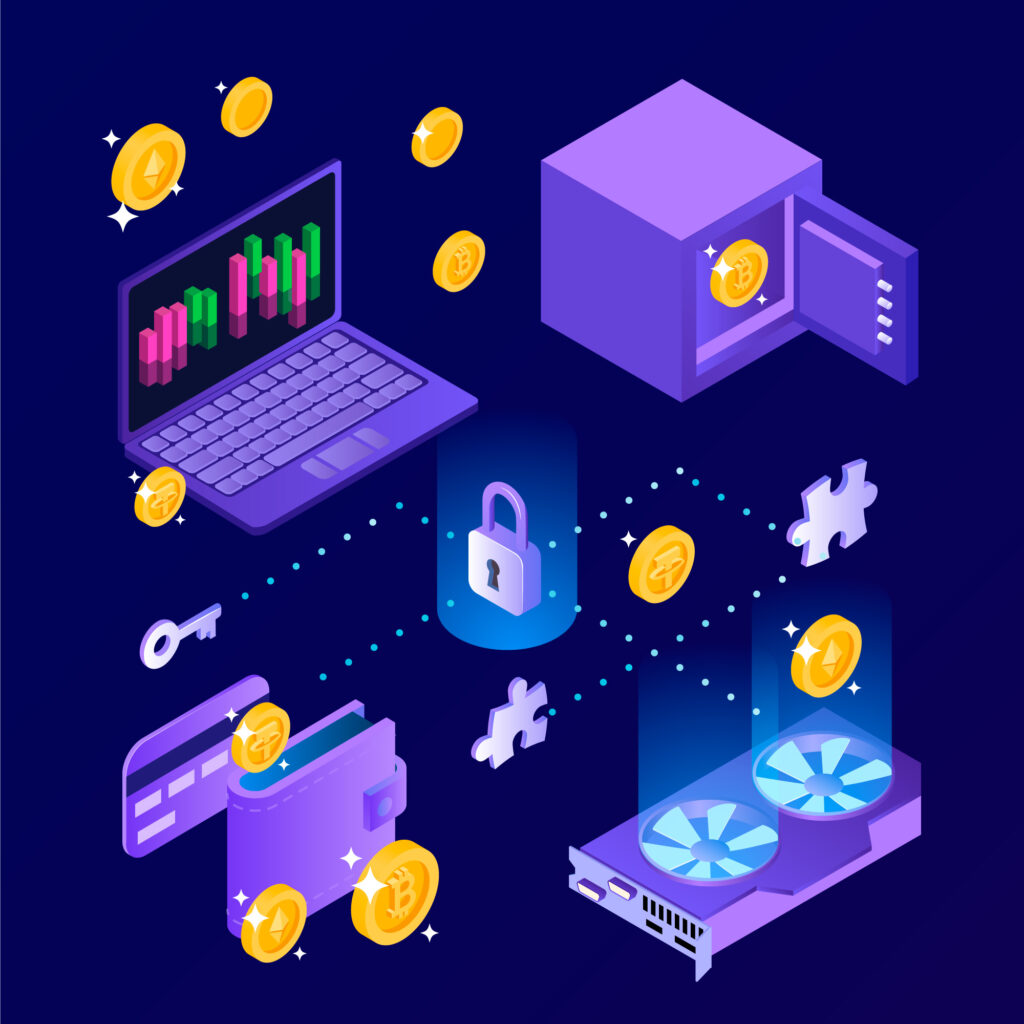The intersection of the physical and digital worlds has never been more pronounced than in the realm of cryptocurrency, where Real World Assets (RWA) stand as a testament to this convergence. The comprehensive report by Coin Gecko on RWAs provides an insightful overview of their inception, historical context, and the pivotal role they play in today’s crypto ecosystem. RWAs are not merely digital constructs; they are tokenized versions of tangible, real-world assets that have found a new lease of life on smart contract blockchains.
The concept of RWAs dates back to 2014 with the advent of stable coins, which sought to bring stability to the volatile crypto markets. Tether (USDT) was the trailblazer, becoming the first to issue a stable coin on the Bitcoin blockchain. This marked the beginning of a new era where the stability of fiat currencies could be enjoyed within the decentralized and borderless context of blockchain technology.

As the crypto market matures, RWAs are gaining unprecedented importance. These tokenized assets, representing everything from stocks and bonds to pieces of real estate, are redefining what it means to own and trade assets. Stable coins, such as Tether, have been instrumental in this evolution, providing a digital stand-in for fiat currencies since their inception. The innovation didn’t stop there; other stable coins like Pax G emerged, pegged to physical gold, thus marrying the old with the new.
The significance of RWAs lies in their ability to provide a bridge between traditional financial assets and the burgeoning world of crypto. They offer the promise of greater liquidity, transparency, and efficiency, all while operating within the secure and immutable framework of blockchain technology.
In the competitive arena of stable coins, Tether and Circle are two giants whose strategies and market positions offer a fascinating study in contrasts. Tether’s offering is available across a multitude of blockchains, and its lack of a governance token sets it apart from many of its peers. Despite its competitive fees, Tether’s market cap of $33.6 billion as of February 2021 reflects its position in the market.
Circle, with its USDC and EUROC stable coins, presents a different approach. Its reserves are fully collateralized by cash and cash equivalents, along with US Treasury Securities, providing a level of assurance and stability that is reflected in its fee structure. The report’s analysis of the stable coin market reveals that fiat-backed stable coins had a total market cap of $33.6 billion in February 2021, with USD-pegged stable coins dominating 95% of this market share.

Tokenized treasuries and private credit protocols represent a significant innovation in the crypto space, offering new mechanisms for borrowing and lending. As of early 2023, tokenized treasuries had a notable presence on the chain, with Franklin Templeton controlling a substantial market share. The majority of these protocols are based on Ethereum, although some, like Franklin Templeton, have chosen to utilize Stella, showcasing the diversity of blockchain platforms.
Private credit protocols have opened up new avenues for real-world businesses to obtain loans based on their credit history, without the need for traditional collateral. The report lists several top private credit protocols, including Maple, Trufi, Centrifuge, Clearpool, Goldfinch, and Florence Finance, which collectively saw a significant increase in active loan value in 2021. However, the crypto market crash in 2022 brought about defaults, highlighting the risks associated with such innovative lending models.
Regenerative Finance (ReFi) projects are at the cutting edge of the crypto industry, aiming to address social and environmental issues through blockchain technology. The report outlines four main areas of focus for ReFi projects: tokenized environmental credits, ocean and marine conservation, renewable energy, and public goods funding. These initiatives are not only innovative but also serve a higher purpose, aligning financial incentives with the well-being of our planet and society.
Tokenized environmental credits, for instance, offer a way for institutions to be rewarded for reducing their environmental impact, with the added benefit of these credits being tradable on marketplaces. Ocean and marine conservation projects leverage blockchain to track and protect marine life, while renewable energy projects use the technology to ensure the verifiability of sustainable energy usage.

The tokenization of Real World Assets is expanding horizons in various industries, particularly real estate, luxury goods, and fashion. The report provides examples of how public blockchains are being used to increase liquidity and enable fractionalized ownership, such as converting paper deeds into digital tokens. This not only makes real estate more accessible but also allows for innovative payment methods using cryptocurrencies or NFTs.
The luxury goods and fashion industries are also experiencing the benefits of tokenization. Projects dealing with collectible cards, fine art, and fashion items are finding new ways to authenticate, trace, and trade these high-value items. Despite the growth in the RWA market cap, the report notes that none of the RWA governance tokens have yielded positive returns, suggesting that the market is still in its nascent stages.
Amidst this evolving landscape, ND Labs stands as a beacon of innovation, continuously pushing the boundaries in the web3 space. Our team is not just keeping pace with these developments; we are actively shaping them. We offer expert consultations on RWA topics and are always ready to engage in discussions about developing or tokenizing products or businesses. At ND Labs, we believe in the transformative power of tokenization and are dedicated to bringing your visionary projects to fruition.
The future of Real World Assets in the crypto ecosystem is bright and full of promise. The ongoing integration of RWAs is set to redefine asset ownership and investment, making them more liquid, accessible, and inclusive. While the path ahead may be fraught with regulatory hurdles and market uncertainties, the potential for RWAs to revolutionize the financial landscape is clear and compelling. The RWA Report 2024 not only captures the current state of this evolution but also serves as a harbinger of the exciting developments yet to come.